

MOS has developed an impressive cache of work over a relatively brief period of time, including a range of designs unequivocal to the company’s unique, and at times quirky, style. Their approach considers economic climates and environmental limitations, but evades conventional aesthetics. Take it from the firm’s website; MOS rejects the ordinary. A succinct self-description concludes that their company is “a collective of designers, architects, thinkers and state-of-the-art weirdos.”
With the recent release of MOS: Selected Works, it seems fitting to reflect on a selection of projects that highlight the company’s discernible attitude toward conceptual design and architecture.
Krabbesholm Højskole, Denmark
A few years ago, the Danish university Krabbesholm Højskole sought to revise and relocate their studios for all art, architecture, graphic design, and photography programs. The school is soaked to the brim with history, with its first academic term dating back to 1885. Simply put, the surrounding area has some solid roots.
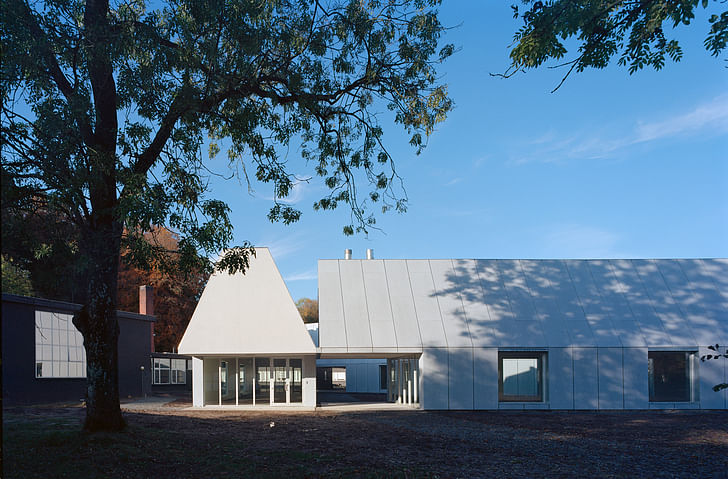
While the institution has been educating students for over a century, the revamped facility would suggest a fresher operating timeline. As of 2012, Krabbesholm’s façade is sleek and minimal; its materials more akin to modern architecture than old, rural European dwellings. Steeply sloped roofs and cement-panel cladding mirror structural components of existing buildings on the premise.
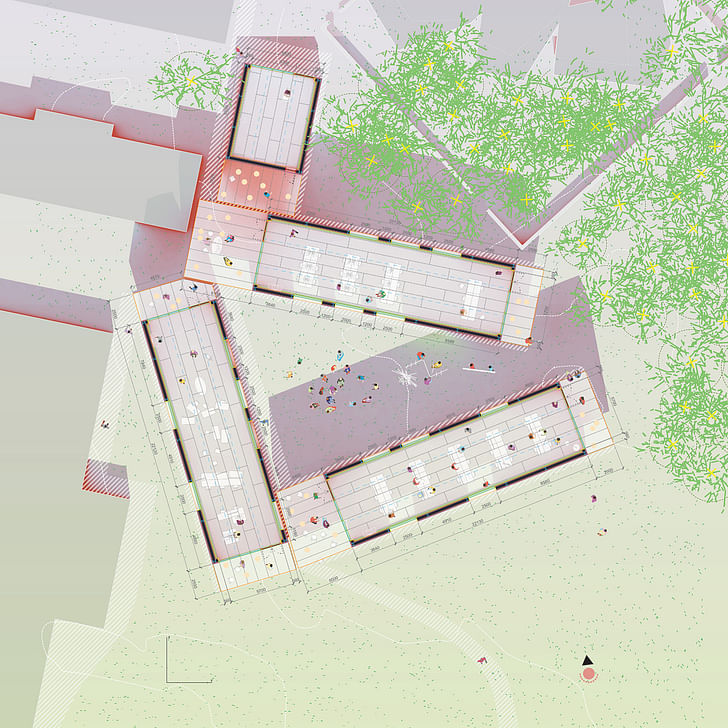
The informal layout of the campus encourages social and visual interaction amongst all departments. Interconnected exterior courtyards as well as studio buildings that don large windows, high ceilings and covered porches give the building a bright and open atmosphere. With plenty of seating offered on the shared studio porches, the space provides a comfortable environment for students to work and hang out.
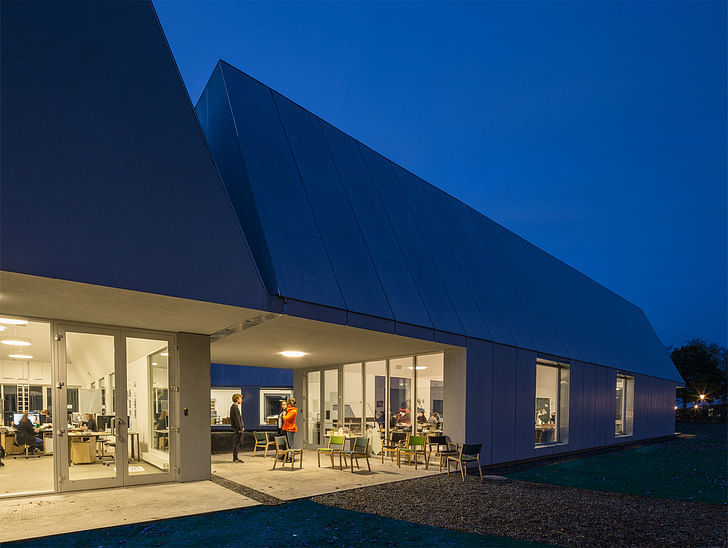

Community Center, Kathmandu, Nepal
Lali Gurans in Kathmandu, Nepal is still under construction, but offers a very promising future. The design plan encompasses a community library, meeting house and orphanage that safely houses 40 children and young adults – and does so with a bright and open concept that integrates beautifully into its natural environment.

MOS has embraced the site’s geographical challenges by constructing a facility that withstands particular seismic activity, in addition to solving issues that relate to water sanitation and drought. A double concrete frame has been organized concentrically, while sustainable systems such as brise-soleil, permaculture roof gardens, bio-gas, solar panels, rainwater collection, natural lighting, passive wastewater treatment, and passive heating and cooling have been thoughtfully integrated into the building.

The Lali-Gurans website declares that the building will be “the world's first seismic proof self-sustainable orphanage and full public library”, reiterating that “it will not only impact the children and staff it houses, but the local community of 40,000 residents. It will provide a non-institutional atmosphere, making educational resources readily available, and create a healthy codependence between the orphanage and local community. Because of its self-sustainable systems, it will cost nothing to operate [and will generate] its own income.”
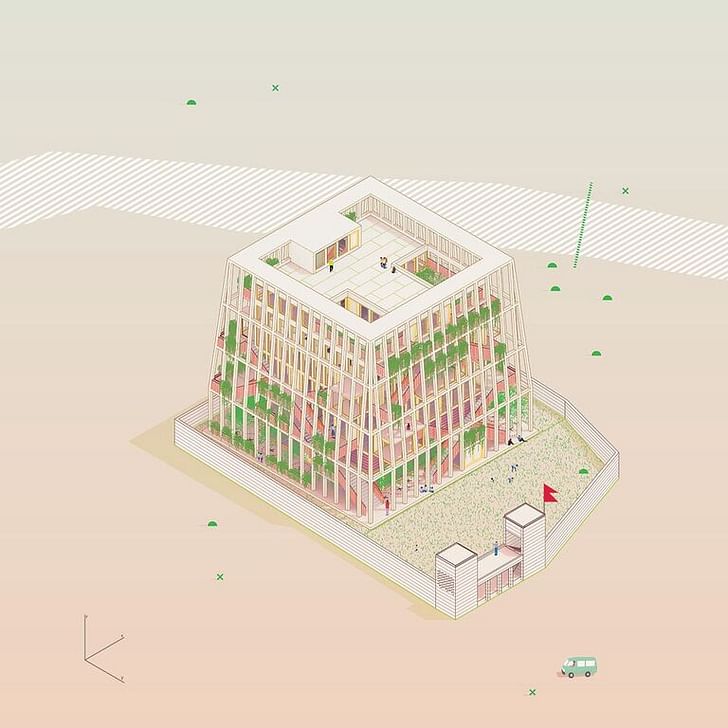
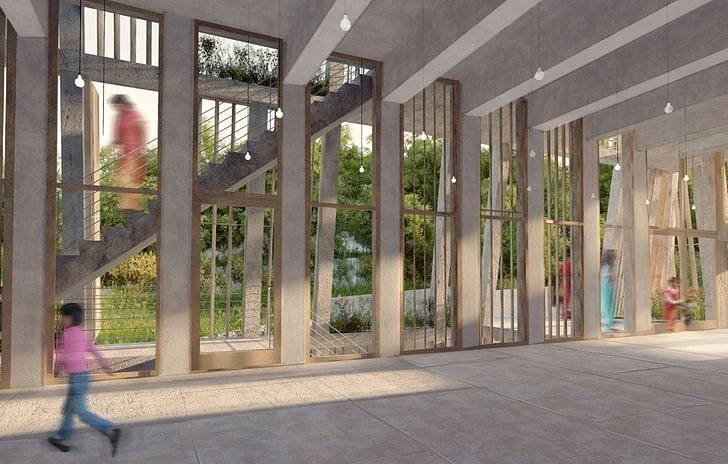
Corridor House, The Chicago Architecture Biennial
The Corridor House, a.k.a. “House No. 11”, was exhibited as a full-scale plywood model at the Chicago Architecture Biennial in 2015. Showcasing an uncomplicated facade and interior, MOS Architects have produced a full-scale prototype; a conceptual dwelling that is intended to coincide well with its given landscape.

The 468 square foot pre-fab home is based on suburban vernacular corridors, with two module volumes (5’x10’ and 5’x15’) situated orthogonally, one after another. The structure maximizes the feeling of open space within a relatively small floor plan, and designates areas for potential mechanical systems or passive cooling.

Reflecting on the concept, MOS stated “...at some point, before the existence of twitter, the corridor killed a certain type of architecture… Courtyards collapsed into light wells; diagrams became buildings. It was all about transit, all the time. Architecture focused on the circulation of things, people, air, light, goods. Space became a lubricant. It was almost spiritual. Architecture embraced the new efficiency of the short circuit, a faster way of getting from one place to another. As space was replaced with movement, stuff was jettisoned, and the leftovers piled up. Nowadays, corridors are a necessary afterthought, an indifferent space joining ‘this’ to ‘that’ in houses everywhere. ‘House no.11’ occupies that circuitry.”
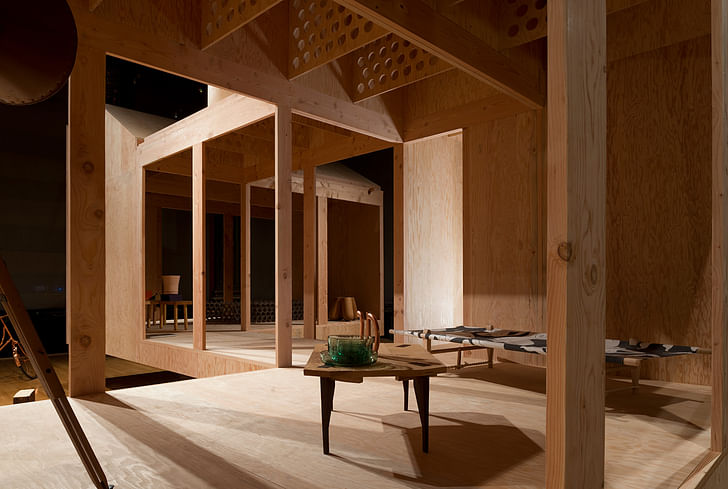

This modest selection of projects – one completed, one conceptual, and one in-progress – provide a mere glimpse into the eccentric, yet very practical minds of MOS. Meredith and Sample have lead MOS to challenge conventions by thinking outside a rather resistant box. We can’t wait to see what they dream up next.
Alexis is a writer and curator based in Victoria B.C. She has a passion for material culture studies, auction hunting, art, travel, and museums. Alexis received a B.A. Honours degree (majoring in Art History) from the University of Victoria, and is currently flying by the seat of her pants.
8 Comments
Holy shit I love this work!
Yes. And the buildings aren't bad, either . . . !
John Hejduk?
refreshing to see drawings with character instead of overphotoshopped renderings! thoughtful not flashy.
Great Work! Are the digital renderings created in Rhino(grasshopper) then to Illustrator..? Thanks,
JBL
Amazing what you can accomplish when you don't justly (or legally) compensate your staff.
^ I had a similar experience with another young/hip nyc firm years ago. Their Ivy league and Architectural League pals are silent on this problem that is affecting many young designers. It shuts out people who don't have a trust fund to live off of.
My impression, gained over decades, is that young architects are seen by the industry as artists of a kind, something akin to itinerate crafters, perhaps, who willingly sacrifice everything for their love of the art. In Boston, c. 1968, $2.50 was the meal allowance for those willing to work in the evening; I suppose it would be $10 now ? Straight pay, of course, not time-and-a half; I suppose the dedicated drones were lucky to be paid at all for overtime work, in this field ?
How much has the human-rights movement advanced the conditions in the office of today ? I'm told there are more graduates than ever, looking for work . . .
Block this user
Are you sure you want to block this user and hide all related comments throughout the site?
Archinect
This is your first comment on Archinect. Your comment will be visible once approved.